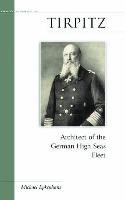Alfred von Tirpitz (1849¿1930), who joined the Prussian Navy in 1865 as a midshipman, was chiefly responsible for rapidly developing and enlarging the German Navy, especially the High Seas Fleet, from 1897 until the years immediately prior to the First World War. Epkenhans uses newly discovered documents to provide a fresh treatment of this important naval leader. In 1897, Tirpitz became the Secretary of State of the Imperial Navy Department. In four major building acts of 1898, 1900, 1908, and 1912, and, in working closely with Kaiser Wilhelm II, Tirpitz expanded the Imperial Navy from a small coastal force into a major blue-water navy. Great Britain, reacting with alarm to this challenge to its overseas trade and naval supremacy, accelerated the naval arms race by launching a revolutionary type of battleship, the Dreadnought, in 1906 and entering into strategic alliances with France and Russia. By the start of the First World War in 1914, the British Royal Navy still held a sizable advantage in capital ships over Germany, so that only one notable fleet action, Jutland in 1916, took place during the war.Tirpitz, who had become the German Navy commander with the outbreak of the war, thereafter became a staunch advocate of unrestricted submarine warfare. This policy did not differentiate between neutral and belligerent shipping and proved so controversial with the neutral United States that Germany was forced to retract it, albeit only temporarily. In the meantime, Tirpitz tendered his resignation to the Kaiser, who surprisingly accepted it. Tirpitz remained a minor figure thereafter, later serving the right-wing Fatherland Party as a deputy in the Reichstag.


